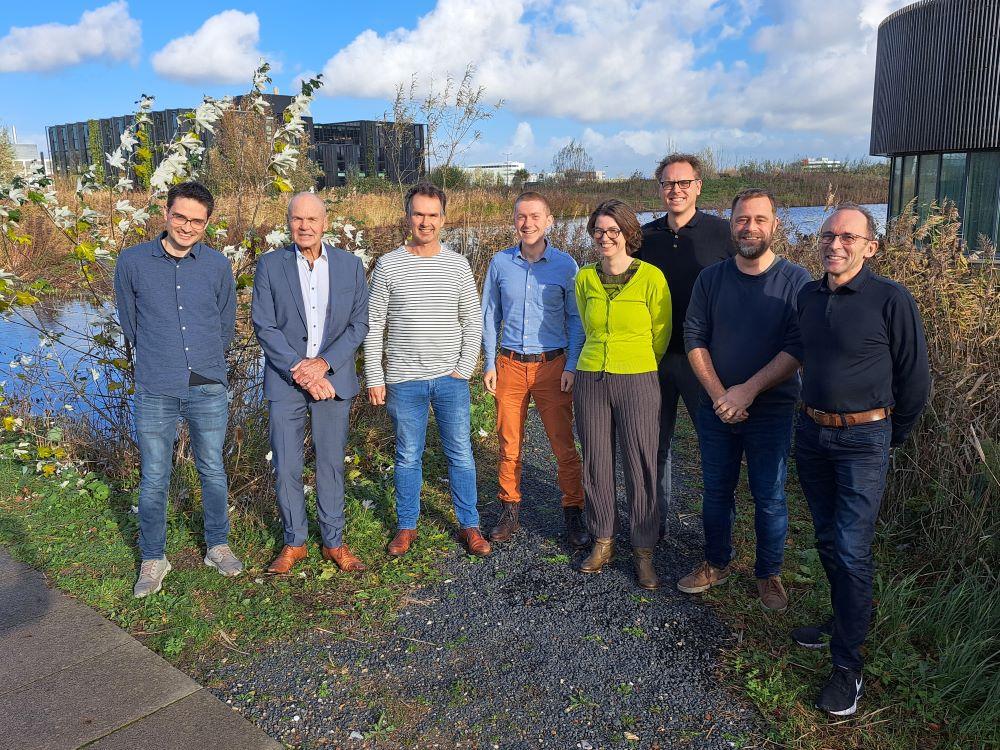How can we effectively tackle sand starvation in the Eastern Scheldt?
This is an important question because, in addition to the negative effect on nature, sand starvation in the Eastern Scheldt and in similar systems worldwide can also result in safety problems for the hinterland in the long term.

Sand starvation has been a feature of the Eastern Scheldt for many years already. Due to the construction of the Eastern Scheldt Barrier, the channels are too large and too little sediment enters the system, resulting in the erosion of the ecologically valuable sandbanks, mudflats and salt marshes. Sea level rise puts greater pressure on the banks and it can only exacerbate the long-term effects.
Sand starvation is not a new phenomenon but it is intensified by sea level rise
Sand starvation is bad news for nature in the Eastern Scheldt area and, ultimately, for the safety of the hinterland. The sandbanks, mudflats and salt marshes are important stopover locations and they are resting places where seals, birds and fish can feed. They also act as natural breakwaters.
Rijkswaterstaat has worked hard over the past fifteen years to keep them in good condition. They do this in sand nourishment operations to raise these areas of the Eastern Scheldt. As long as there is no alternative, sand starvation is remedied by replenishing the deficit. This is done every few years in a different place in the system. To ensure that the maximum added value is delivered for nature, it is necessary to keep on developing our knowledge. With each nourishment operation, we acquire new insights about how to implement these interventions more effectively. For example, studies of how much, and which, sediment delivers most ecological benefits and where that works best.
Sand starvation in intertidal zones requires more and more knowledge
To be prepared for the uncertain future of the sandbanks, salt marshes and mud flats in intertidal areas, a ‘nourishment for nature knowledge community’ was established recently. This community will be drawing up a knowledge agenda for 2024-2033. How long will nourishment be the best solution, are there better solutions, and, if so, for which locations? And as long as nourishment continues to be the preferred strategy, how can we best implement those nourishment operations? Which knowledge is already available, and what do we still have to find out?
Pooling knowledge and experience about management operations for nature
The initiative for the community was taken by Deltares, Rijkswaterstaat Sea and Delta, the Eastern Scheldt Knowledge Community, the North Sea Foundation, Wageningen Marine Research, NIOZ,Delft University of Technology and HZ University of Applied Science. They will be the first to combine crucial knowledge and experience about nourishment for nature. The focus is on the Eastern Scheldt. However, this knowledge can also contribute to the management of other systems. Moreover, much can also be learned in the Eastern Scheldt from the challenges and solutions that are factors in other systems, such as the Wadden Sea.
The nourishment for nature knowledge community is an open platform. If you have knowledge in this area and would like to contribute, we would love to hear from you. Because intertidal areas are so important for resilient and sustainable delta areas, I believe that this interdisciplinary initiative, which also includes management organisations, will provide considerable added value. Sharing and further developing our knowledge on the basis of monitoring, models and experiments will make a significant difference to the effectiveness of nourishment for nature.
Lodewijk de Vet, coastal morphology expert


